Archive for ‘Wardrobe’ Category
5 “Real Simple” Reasons We Don’t Get the Laundry (or Paperwork) Done
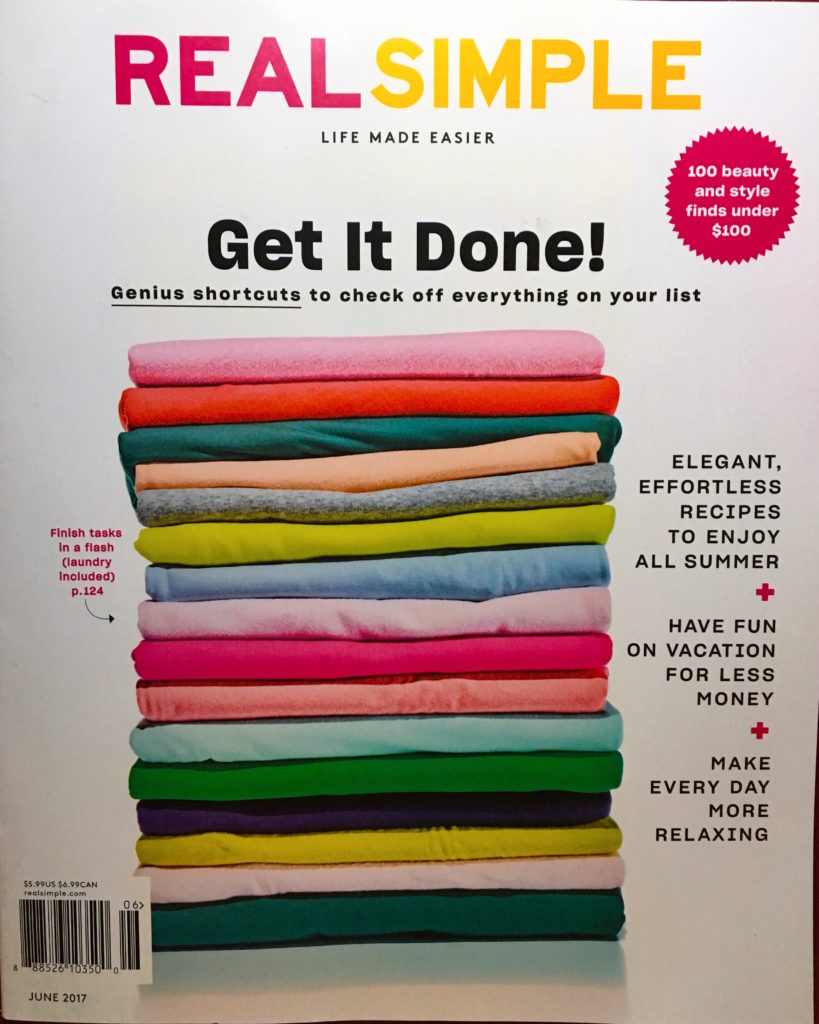
Did you just do a double-take? Laundry? In a Paper Doll post? While we rarely talk about organizing non-paper aspects of domestic life, a recent interview presented an interesting way to use laundry to consider how we procrastinate on other tasks, like paper management.
A writer for Real Simple Magazine contacted my colleague, the fabulous Dr. Melissa Gratias, about the psychology behind why people fail to finish their laundry. Being interviewed by Real Simple is a plumb opportunity, but Melissa – a psychologist by training – focuses on corporate organizing and professional productivity. Melissa honored me by suggesting Real Simple should get my take on the topic.
In the end, in Real Simple‘s June issue about “getting it done,” laundry ended up being just one small section. (See my quotes on page 128!) But you, dear readers, have the opportunity to learn it all!
The reporter asked:
Why [do] we have trouble finishing the laundry (wet clothes left in the machine, clean clothes not folded, folded clothes not put away) – and how we can change our habit to get it done in one swoop so it’s off our plate?
The key word in the inquiry was “finishing” but for many people, even starting laundry is the bigger obstacle. It’s funny to think about why we put off laundry as this huge, scary thing, because our great-grandmothers used finger-peeling washboards and our great-greats had to take the washing down to the river to beat the clothing against the rocks.
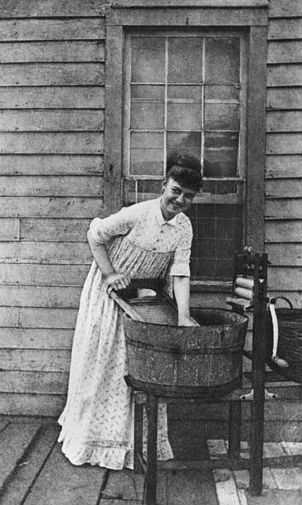
Meanwhile, we drop our laundry in metal boxes and push a few buttons! It’s not particularly onerous, so there must be more to it than the labor — and, as you may have suspected, much of it is psychological. However, small tweaks can dramatically improve our ability to get our laundry done and get us on our way — fully clothed, unstained, and possibly in a fashionable mode of dress.
First, laundry is not a task, but a project. Tasks are singular, but the ongoing saga of the laundry project involves multiple sequential tasks:
- collecting our laundry from the various places we (and our children, and our spouses who sometimes act like children) drop or toss them
- remembering what special tasks (pre-treating stains, removing accessories, securing drawstrings) must be performed
- sorting laundry by color and/or temperature
- washing (but the actual labor is done by the machine)
- transferring the laundry to the dryer, making sure to remove any items that must be line-dried or hung over sweater racks or otherwise given extra attention
- drying (again, done by the machine)
- removing laundry from the dryer in a timely manner so that wrinkles don’t set in
- folding laundry (clothing, bedding, towels, etc.) and hanging clothing
- putting it all away
Wow. These discrete tasks should naturally flow from one to the next, just as the various steps in cooking a meal, but we’re much more inclined to wander away, mid-task, with laundry.
Consider the following obstacles and solutions:
1) PROBLEM: We lack timely triggers to start laundry.
At least, we don’t have them in the same way we do as for preparing a meal. (What? Do you starve for fluff & fold?) Other than in college, when students tend to put off laundry until they run out of clean underwear, most adults don’t have a natural trigger to get started on laundry.
SOLUTION: Create your own triggers.
Pick days and times when you’ll do laundry, like during your children’s piano lessons and scouting meetings on Tuesday and Thursday afternoons, or on weekend evenings after dinner, because the bulk of the work can be done quickly before TV time and the folding can be done during commercials. Set alerts on your phone or computer and let them serve as your valet or butler — albeit one unwilling to do laundry, but happy to remind you that it must be done.
This concept works just as well for paper-oriented tasks. Instead of waiting for your bills to be due (or overdue) — the equivalent of running out of clean laundry — schedule a time to work on your tasks. Bill-paying is a kind of correspondence (though you’re sending money, rather than cheery news), so you might schedule other tasks, like writing thank-you notes at the same time. In your professional life, group tasks like responding to emails or drafting your business newsletter at set times on certain days, like after your staff meeting on Wednesday mornings.
The key is to identify your trigger, set an auditory or visual alert to help you focus on the trigger, and create a time block to complete the task. Maybe the new Time Timer we recently reviewed can help?
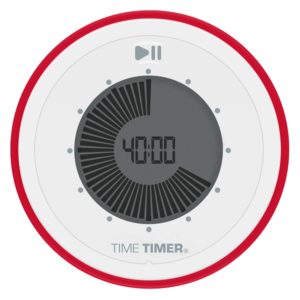
2) PROBLEM: We anticipate that laundry will be more of a pain than it actually is.
Although laundry requires multiple steps, most of them are easy and each can be completed in a matter of minutes (except for what the machines do). But many of us recall when laundry was difficult (requiring amassing adequate stashes of quarters, dragging heavy laundry bags from our dorm rooms to basement laundry rooms only to find all the washers were in use), and that sense memory makes us subconsciously rebel against even the idea of doing laundry.
SOLUTION: Find ways to make doing laundry less unpleasant.
- Install better lighting in your laundry room, and clear the space of clutter.
- If your laundry room is also used for other purposes, create a separate laundry zone. Corral your bottles of stain remover, boxes of fabric softener, lint remover, and everything except your heavy detergent bottles, in rubber dishpans or tubs you can easily slide off cabinet shelves.
- Install a valet hook, a rolling clothes rack, and/or a retractable clothes line in your laundry area to make buttoning, zipping, and hanging clothes easy.
- Get rid of (or fix) anything about your laundry area that makes you avoid it.

These tips work for paperwork, too. Do you put off filing, remembering that one time it took you all weekend to deal with six months’ worth of paper backlog? You have almost ten years of Paper Doll advice on how to create a filing system so that everything is logical and easy to find. Join the Clean Desk Club, and learn what papers you need to keep and what you can toss by getting Do I Have To Keep This Piece of Paper? Instead of filing months of papers in drudgery, do short bursts every week, and put on your favorite music to liven the mood.
3) PROBLEM: We lack systems and don’t set aside time to complete the project.
Work isn’t completed until it’s done, and laundry isn’t done until it’s put away. But that injects another problem. Because we procrastinate about doing laundry, we then feel that we have to do ALL THE LAUNDRY all at once, at which we either will fail (making us resentful of that sense of failure) or succeed (making us resentful that we’re expected to ever do it again).
SOLUTION: Create physical and behavioral systems to make the work easy to complete.
- Only start laundry when you’re going to be around to complete a load from start to finish.
- Don’t start a load of laundry late at night – you’ll be tempted to go to bed and leave the items in the washer or dryer.
- Sort laundry sessions by type. Do bedding and towels when it’s more likely you’ll be interrupted. (Nobody minds wrinkled towels).
- Do more smaller loads of clothing. It’ll wash better and dry faster.
- Know how long your washer and dryer cycles take; if they don’t have musical alerts that you can hear from elsewhere in the house, set your kitchen timer or phone alarm to remind you to move the process along.
With papers, conquer your ingrained avoidance by making sure you have systems that make it easy. Create homes for what is to-be-paid and to-be-filed, and a filing system that is aesthetically pleasing (if that’s what gets you going) and ergonomic (with good lighting and a comfortable place to sit so you don’t hurt your back while working).
Behaviorally, you can complete small tasks in whatever time you have available, but if you’re working on a larger project, like developing a family budget, writing your graduate thesis, or putting together your start-up’s marketing plan, you need to see the big picture and make sure you’ve blocked time to take your project from start to completion.
4) PROBLEM: We resent that we’re doing all the work!
While some of us find the folding of laundry to be almost Zen-like, for most people it’s not exactly
Disney World. That doesn’t mean laundry must mean misery.
SOLUTION: Don’t feel obligated to do it all by yourself.
Delegate: If your kids are old enough, teach them how to do laundry, starting with hard-to-destroy items like towels, and help them to understand laundry instruction tags, temperature settings, etc. Start by working together, and once they’re good to go, include the least destructible types of laundry on their chore charts.
Share: Nobody says laundry has to be a solo adventure. Just as with kitchen tasks (I’ll wash, you dry), split up the effort so it seems like less work. If you get the clothes sorted, pre-treated, and into the washer, make it a tag-team event and let your partner get it from the dryer to the bedrooms and linen closets.

Trade tasks: If you really hate doing laundry, even with these tips, see if your spouse has a much-detested task of similar effort and value, and trade-off, even if only for a few weeks at a time, to give you both a respite.
Entertain yourself: If nobody else can or will help, make laundry time delightful. Listen to podcasts or favorite songs while you do the bulk of the work, and let yourself focus on fun rather than work during the washer and dryer cycles.
This advice is applicable in your non-laundry areas, too. Whatever you have to do, if it’s not something at which you’re skilled (or willing to get skilled), find a way to get it off your plate. If you don’t have a committee member, colleague, employee, neighbor kid, or pal to whom you can delegate or with whom you can share, hire someone affordably:
5) PROBLEM: Our closets and drawers are bulging.
Here’s where the Pareto Principle really comes into play. 80% of the time, we wear the same 20% of our wardrobe; we wear, we wash, we dress out of the laundry basket. Our clothes don’t make it back to our closets and drawers because we often know that trying to squish hangers into tightly jammed spaces or folded clothing into overstuffed drawers will be futile. It reminds us that we must purge our excesses, and to avoid that discomfort, we subconsciously avoid even taking clothing back to where it belongs.
SOLUTION: Declutter!
- Pair up with a spouse, teen, or friend, or enlist the aid of a professional organizer so that you can reduce the number of items that no longer fit (your body or your lifestyle) or flatter.
- Arrange by clothing type (to make it easier to know where to return any just-laundered item.
- Move empty hangers to one area, so you’ll be able to grab them for laundry use instead of fighting to untangle them amid the chaos. Move anything that isn’t clothing, shoes, or
accessories elsewhere. - Pare down linen closets to what you actually use; jettison threadbare towels; donate sheets that don’t fit any size beds you currently own.
To get from to-do to halfway-done to finished with paperwork, eliminate the distracting clutter. Get the kids toys off your bill-paying desk and back to the playroom, pull and shred the household bills from 1987, and get the dust-covered knickknacks out of your workspace.
Finish the laundry. Finish the paperwork. Get on with your life!
NAPO 2015: Wardrobe Organizing, Whether You’re Haute Couture or Low Maintenance
Longtime readers of this blog know that it’s a rarity for me to venture into discussing closets and wardrobes. Paper Doll‘s corner of the organizing blogosphere is definitely better suited to paper and productivity clientele than that of fabulous fashionistas, but I’d be remiss in my recapping of the NAPO 2015 Annual Conference and Organizing Expo if I did not share the word about some of the new and returning vendors specializing in organizing clothing and accessories.
Today, we’ll be looking at services for readers with Red Carpet wardrobes and products for those with down-to-earth accessories.
GARDE ROBE®
The word garderobe is French for wardrobe, but Garde Robe® takes that concept a step beyond, delivering what they call a luxury wardrobe storage and valet service. This is no put-winter-clothes-in-a-plastic-tub-and-stick-it-in-the-attic effort.
 Garde Robe offers a wide variety of high-end services, including:
Garde Robe offers a wide variety of high-end services, including:
- Climate-controlled luxury storage in air-purified storage lofts
- Wardrobe archiving for couture wardrobes
- Seasonal storage for off-season clothing, footwear and accessories
- Professional wardrobe photography and cataloging where each garment is photographed and inventoried with descriptions detailing the style number, year, season, line, fabric, size, and item type.
- A Cyber-Closet app, enabling clients to view and manage stored collections in a personalized online catalog — 24/7 — and select individual garments or an entire wardrobe for delivery
- Luggage-packing and worldwide delivery to second homes, vacation destinations and work locales
- “White-glove” pick-up and ready-to-wear delivery service
- Expert garment care, repair and alterations
Whether you’re a CEO or a celebrity or just someone with refined tastes and accessories to match, you can have your wardrobe stored, inventoried, maintained, and delivered to you, wherever you are (or plan to be).
Garde Robe also has a wide array of specialty services, like “museum-quality” preservation of one-of-a-kind and/or delicate garments such as vintage and couture wardrobe pieces, charitable donation assistance, at-home (or at-hotel) tailoring, image consulting, personal shopping and more.
With lofts and offices located in New York, California, Las Vegas, Florida and services available worldwide, Garde Robe’s services are designed to help a wide variety of prospective clients:
- City residents and condo owners who lack adequate closet space or a suitable storage environment (in terms of air quality, humidity, temperature, etc.) for their year-round and special-event wardrobe items
- Multi-homeowners and jet-setters requiring worldwide access to their wardrobe and accessories, wherever work (or life) may take them
- Travelers who prefer a luggage-free travel experience (and, I mean, who wouldn’t?)
- Personal stylists, wardrobe archivists, personal assistants, professional organizers, and other residential staffers who work with clients like those described above
Check out the site to get pricing information.
CASH IN MY BAG™
What if your problem is not that you live and work in too many fabulous places to keep your wardrobe available (and in perfect condition) at a moment’s notice? What if you merely have a bounty of designer items of which you’re no longer enamored? You could schlep your designer handbags, accessories, jewelry, watches, and shoes to a consignment store, but then you’d have to wait to see when (or even if) your items might sell.
That’s where Cash In My Bag comes in — in what’s called the pre-owned luxury market. Instead of waiting for consignment, this service offers a simple, straightforward process for recouping some of the money spent on high-end goodies.
- Complete Cash In My Bag’s short online form, with drop-down menus to identify the designer, category (e.g., handbags, shoes, etc.), condition, age, and if applicable, date code or serial number. Describe your items & upload pictures. Tell them if you’re able to include an original box, a receipt, original tags, an authenticity code, and/or a dust bag.
- Within two business days, a Cash In My Bag luxury expert emails back a customized preliminary quote.
- Package your items and use the pre-paid and insured UPS shipping labels provided with your quote. (Insured shipping is at no cost to you.)
- Once Cash In My Bag receives your shipment, their appraisers inspect the items to verify authenticity and review their condition. Based on this appraisal, they email (or text, if you prefer) a final quote.
- Agree to sell, or if you decline, Cash In My Bag will ship your items back at no cost to you. If you accept the final quote, they will mail out a check within 24 hours.
Cash In My Bag pays sellers up-front; there’s no waiting for a resale, as with consignment, and they promise to pay top market prices. Because each item is researched to ensure high payouts, and because they only buy authentic designer merchandise, Cash In My Bag provides guidance for verifying authenticity, and charges a $20 return fee for any inauthentic item sent for resale.
Check out the full list of designers whose items Cash In My Bag purchases. So, if your closet is too hard to dust (ahh-choo) with so many Jimmy Choos, or you’re having trouble choosing between (Ralph) Lauren and (Yves Saint) Laurent, there’s an alternative to consignment. If your Alexander McQueen is no longer making you feel so royal, or you feel like the devil in Prada, or a bad breakup left you Fendi-ing off the advances of a boorish beau, Givenchi (bless you!) Cash In My Bag a try.
PURSE PERFECTOR
Whether your bag is haute couture or a beat-up backpack, sometimes the issue is just a matter of keeping your keys and phone and tissues and cosmetics from falling into a lint-y pile at the bottom of an echoey well. NAPO Corporate Associate Member and Conference & Expo stalwart Purse Perfector offers an easy alternative to that bottom-of-the-purse mess.
 Just load up your Purse Perfector purse organizer with your daily essentials and drop the whole kit-and-kaboodle into your purse, gym bag, or diaper bag. Each Purse Perfector is sectioned and a bit of a shape-shifter to suit your needs as the day goes on.
Just load up your Purse Perfector purse organizer with your daily essentials and drop the whole kit-and-kaboodle into your purse, gym bag, or diaper bag. Each Purse Perfector is sectioned and a bit of a shape-shifter to suit your needs as the day goes on.
Each Purse Perfector is made of hand-tailored, high-grade, durable nylon, and has eight tailored pockets, one long center pocket and four flat card pockets for credit, debit or loyalty cards. A zipper joins the two sides of the Purse Perfector to create a long, center pocket suitable for fitting a wallet-size checkbook or other essentials. Unzip entirely, and you get two separate organizers to use in a divided bag, a thinner side-by-side profile for inside a large-pocket bag, or use just one when you’re carrying a teeny purse.
The tall section works best for wallets, pens and highlighters, and sunglasses or reading glasses, while the shorter section works best for compact items like phones, cameras, lipsticks, hand sanitizers and notepads. The rear of the taller section has a small pocket suitable for hotel keycards or business cards.
The flat bottom of the Purse Perfector keeps it stable for an easy stand-up review of the contents before you zip, unzip, or relocate the organizer to a different bag.
The machine-washable Purse Perfector comes in Medium (in Berry, Sand, Black with Silver, and Black with Berry) for $44.95, and Large (in Sand, Silver Sage, Navy with Silver, Black with Silver, and Black with Berry) for $49.95, and may be purchased directly from the Purse Perfector website and from the Purse Perfector section of Amazon.
PLIIO®
Finally, no review of the NAPO 2015 Expo’s wardrobe offerings would be complete without a mention of friend-of-the-blog Pliio®, which innovated the idea of filing clothing, vertically, instead of piling them.
I’ve reviewed Pliio extensively as recently as last year’s post, NAPO2014: Fashion-Forward Organizing Solutions, so if you’re not yet converted to the wonders of Pliio, take a moment to check out that post, watch some video, and to learn about the amazing little inserts that help you file your clothes.
However, in addition to the well-known Filers that enable organized, vertically filed clothes:
 Pliio has also introduced Clothing Pilers that let those who prefer stacked clothes to filed ones enjoy the tidy, uniform wardrobe organization Pliio fans know and love. Instead of folding in thirds like the Filer, the Piler folds clothing in half.
Pliio has also introduced Clothing Pilers that let those who prefer stacked clothes to filed ones enjoy the tidy, uniform wardrobe organization Pliio fans know and love. Instead of folding in thirds like the Filer, the Piler folds clothing in half.
Just fold long- and short-sleeved T-shirts, golf shirts, tops and sweaters around a Clothing Piler as shown below. Pliio Clothing Pilers fit on shelves with depths of 11″ or more. As most closets have 12″ or greater upper shelves, and custom-built shelving tends to be 14″ deep, the Piler is suitable for most shelves. As with the classic Clothing Filers, clothes kept organized with the Clothing Pilers also work great for travel.
The Clothing Pilers currently comes in Medium (8″ W x 17″ L x 1/4″ D) and fit youth sizes 8-10 through adult XL. The Large (10″ W x 17″ L x 1/4″ D) is soon to be in production, and will fit most sizes from adult XS – XXXL. Both should also be suitable for folding light pants, PJs, scarves and dresses. For more details, view the Pliio product page.
Pliio Clothing Filers are available in the U.S. and Canada via Bed, Bath & Beyond, QVC, and The Shopping Channel, in Small ($6.99 for a set of 7) and Medium ($19.99 for a set of 20). The Clothing Pilers are sold at Bed, Bath & Beyond for $19.99 for a set of 7.
Whether you’re fashion-forward or typically-in-T’s, there’s always a workable strategy for keeping your wardrobe accessible and organized. If you’re having difficulty maintaining your closets the way you’d like, a NAPO-affiliated professional organizer is only a click away.
NAPO2014: Fashion-Forward Organizing Solutions
Although Paper Doll generally focuses on managing your paper to be more organized and productive, sometimes we need to flip the picture, and look at ways to be more organized and productive to save (little green pieces of) paper. To that end, this post will review two wardrobe-oriented products from this year’s National Association of Professional Organizers Conference and Expo: one for helping you eliminate closet clutter, and one to change how you think about putting away your clothes. Both will help you save time and money, and maybe make you feel a little more fashionable.
MY WARDROBE GENIE
My Wardrobe Genie is the brainchild of Massachusetts-based Professional Organizer Susan Terkanian of AllSET Solutions. Susan explains My Wardrobe Genie as a personal clothing management assistant, a way to deal with the overwhelm of items in your closet with ease and confidence, but without undue expense. She has not only tested her system with real clients, she got input from a neuropsychologist!
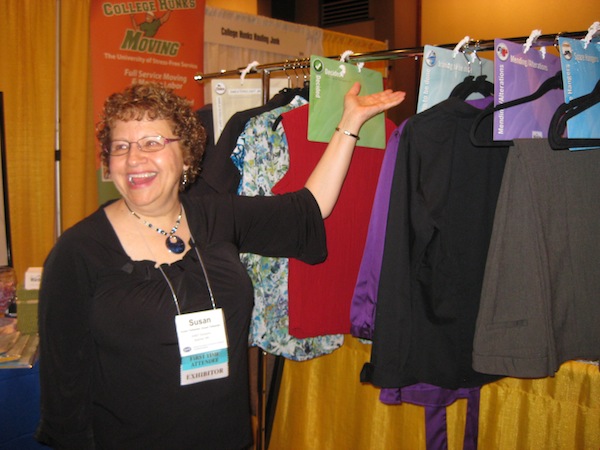 The key to a working wardrobe is keeping clothes that fit (your body and your lifestyle) as well as flatter, but letting go of what misses the mark: even if it was pricey, even if you’ve got happy memories associated with it, even if it was a gift. Intellectually, you know that you’ll never wear that itchy, ugly sweater that you’ve been guilted into keeping all these years. And putting those slacks with the ripped hem back in the closet (because you forget about the hem, every time, until you put them on) is like putting an empty milk carton back into the fridge.
The key to a working wardrobe is keeping clothes that fit (your body and your lifestyle) as well as flatter, but letting go of what misses the mark: even if it was pricey, even if you’ve got happy memories associated with it, even if it was a gift. Intellectually, you know that you’ll never wear that itchy, ugly sweater that you’ve been guilted into keeping all these years. And putting those slacks with the ripped hem back in the closet (because you forget about the hem, every time, until you put them on) is like putting an empty milk carton back into the fridge.
To reduce clothing clutter and get a handle on what you own, My Wardrobe Genie combines the two essentials of any working system: a physical set-up and a behavioral process.
For the closet, My Wardrobe Genie comes with five colorful, laminated divider placards that hang from your closet’s rods to divide your closet into zones. These placards designate:
- Discerning/Decided — This nifty placard divides your closet rod into two areas: what you know for sure that you’re keeping, and what you’re still noodling over in your head. Just that one initial sort as you return clean clothes to the closet, or work your way down the rod, sets the stage for making decisions. Does this fit me? Do I wear it? Does it look (and feel) good? If you know, it goes on the Decided side of the placard. If you are still working on discerning the value, or trying to figure out if it will be donated, discarded, or otherwise distributed elsewhere on the planet, it goes on the Discerning side. Everything in your wardrobe starts out on the “Discerning” side, but (as indicated), once you decide, you move it to the other side of the divider.
- Anything Pressing? — Aside from the hardy few who get their moments of Zen from ironing, not many people are a fan of getting out the ironing board and pressing their clothes. But if your to-be-ironed clothes are out of sight and piled in the laundry room, you’ll never be inspired to tackle the ironing, and if they’re mixed in with the other clean, ready-to-wear items, you’ll pass over them when you make haste to dress. Keeping all the to-be-ironed clothes together lets you know when it’s time to turn up the music and rock out (or zone out) while ironing.
- Mending and Alterations — Sure, it’s great for you to pull out the mending and put it by your sewing machine (or the bag to take to the tailor), but the truth is, at best, you’ll just be creating more piles that you probably won’t get around to addressing. With this section divider, you can see at a glance when you have enough items to make it worth zipping over to the tailor or blocking off time in your schedule to do mending. (For those wondering, for any “mending” more complicated than re-attaching a button, Paper Doll believes in the power of delegation! Why deny someone employment using skills that far surpass my own? Paper Mommy has taught me well.)
- Spare Hangers — Because putting an empty hanger back where you pulled it from is a guarantee that your closet will become disheveled quickly! Store all your spare hangers together to find the right kind when and where you need them.
- Customizable — There’s a blank placard for you to customize to your preference. Maybe you have work uniforms that you want to keep separate from your casual and dressy clothes. Or, perhaps you’re keeping maternity clothes handy for a planned-for blessed event. Make that closet zone work for you.
For those of us who categorize our clothes by color, weight, sleeve (or skirt) length, or other attributes, there’s no need to revise. You can still be that granular in organizing your closet — once you get things to the Decided zone.
Each My Wardrobe Genie kit comes with the five placards, five colorful, coiled elastic hanger cords (to attach the placards to the closet rod), a discard bag, a donation bag, and labels for the bags. Susan expects the My Wardrobe Genie online store to be in place this July.
Although pricing is not listed on the site, the original IndieGoGo campaign looked to price each kit at around $30.
In theory, could you do this on your own? Sure, but as with most organizing concepts, we find that if people could do them on their own, they would have already done so. My Wardrobe Genie gives you that extra guidance to move forward, physically and behaviorally. My only thought is that people with truly overstuffed closets (and/or bad lighting in their closets) may still need a little extra hand-holding from a friend or professional organizer to tackle the initial phases of whipping the closet into shape.
While My Wardrobe Genie is great for your closet, what do you do if you’ve got a lot of drawer-based clothing? For those who lack expansive (and sometimes expensive) walk-in closets, a small closet space means relegating anything that doesn’t have to be hung up to whatever drawer space exists. But if you’ve lots of clothing but not a lot of drawers, what’s a fashionista to do?
PLIIO®
Luckily, there’s Pliio®. Longtime readers of this blog know how much I appreciate this innovation that lets you, for all intents and purposes, file your clothing, upright! But in case you’re new to what Pliio has to offer, I’ve got a little recap. Co-created by Canadian Professional Organizer Clare Kumar of Streamlife, Pliio is one of those brilliant tools that makes you wonder how and why it took so long for someone to come up with it.
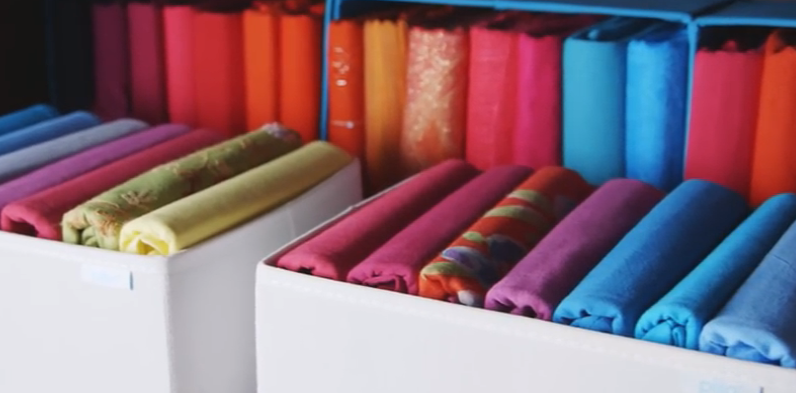 Pliio, itself, comes in two parts: the Pliio® Clothing Filers™ (17″ long x 8″ wide x 1/4″ thick),
Pliio, itself, comes in two parts: the Pliio® Clothing Filers™ (17″ long x 8″ wide x 1/4″ thick), 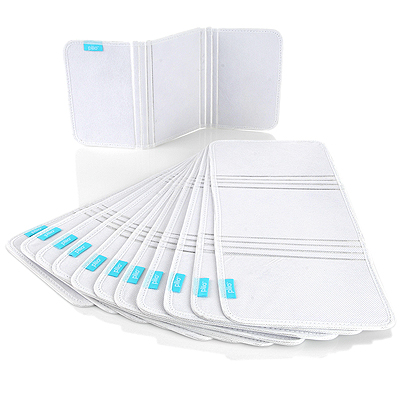 which are essential to the process, and the Pliio® Organizing Boxes (9″ x 11″x 5″), which serve as the wardrobe equivalent of a desktop file box, filing cabinet or drawer.
which are essential to the process, and the Pliio® Organizing Boxes (9″ x 11″x 5″), which serve as the wardrobe equivalent of a desktop file box, filing cabinet or drawer. 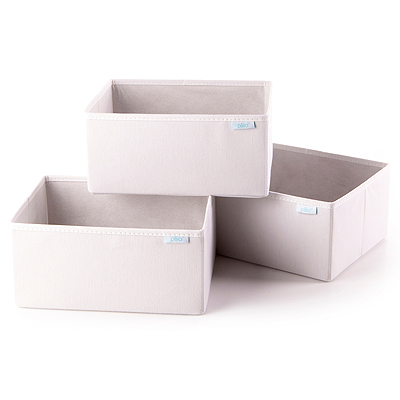 The basics are pretty simple — practically any article of clothing can be wrapped and folded around the Pliio clothing filers. I’ve seen Clare work magic with T-shirts, jerseys, light-weight knits and sweaters, as well as soft (sort of flowy) unstructured bottoms, like yoga pants or skirts, and even dresses. The thinner the fabric, the better it works, and the instructions say that it all works best when there’s about three inches of excess material beyond the edge of the filers.
The basics are pretty simple — practically any article of clothing can be wrapped and folded around the Pliio clothing filers. I’ve seen Clare work magic with T-shirts, jerseys, light-weight knits and sweaters, as well as soft (sort of flowy) unstructured bottoms, like yoga pants or skirts, and even dresses. The thinner the fabric, the better it works, and the instructions say that it all works best when there’s about three inches of excess material beyond the edge of the filers.
See it in action:
Once your clothing properly Pliioed (what? it’s not a verb yet?), you can easily lined up clothing wherever you want it to go — in your drawers, on your closet shelves, or even in your luggage! Use the organizing boxes to keep them perfectly aligned for added orderliness. You only need six inches of depth in your drawers or suitcases to accommodate Pliio Clothing Filers, and you can turn the boxes on their sides (for six inches of depth and nine inches of height) to stack filed clothes anywhere, even on CD/DVD shelves!
For a while after Pliio’s release, you could only buy it on QVC, but it’s available (in the U.S. and Canada) at Bed, Bath and Beyond for about $20/set of ten filers.
It’s not easy to impress me with “doodads,” and I’m fairly frugal, so I only buy what I find to be flawless, but I’ve given Pliio as gifts. One friend with refined tastes — who is already incredibly organized (and isn’t even a professional organizer!) — liked the system so much, she went out and bought more, and Pliioed her husband’s T-shirt wardrobe!
My Wardrobe Genie and Pliio are just two inventive ways to get control of your clothing, get organized, and stop wasting time and money on closet clutter.

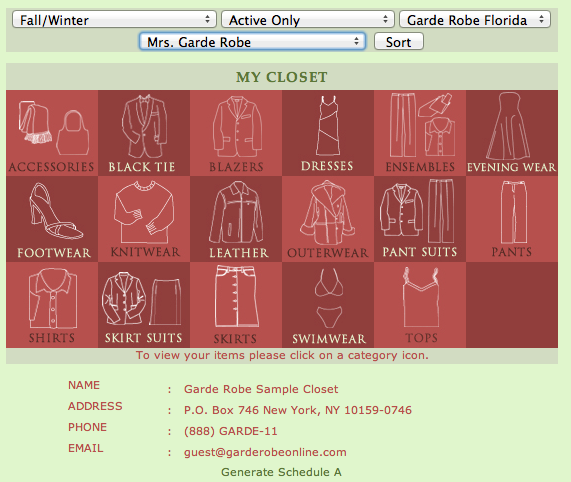

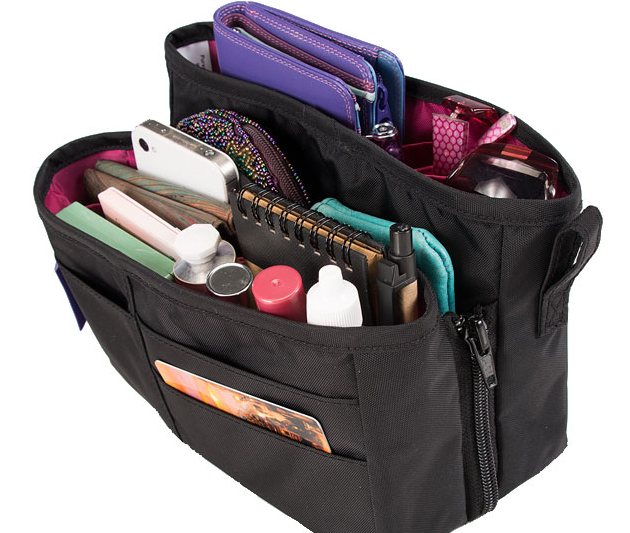
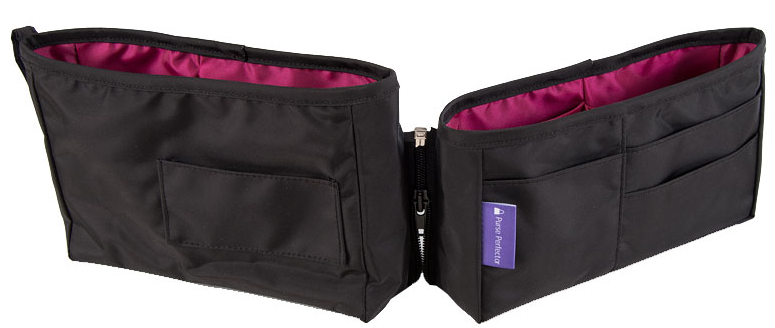
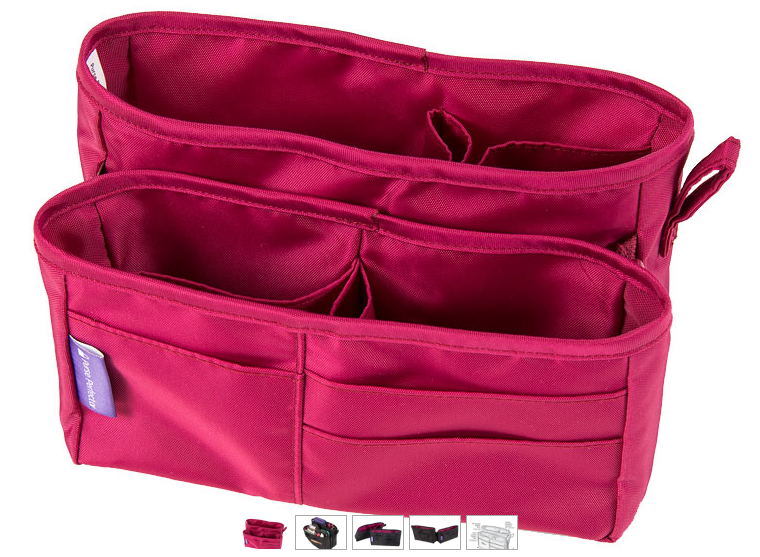

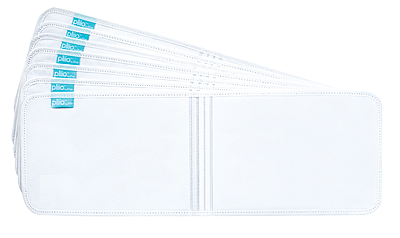





Follow Me